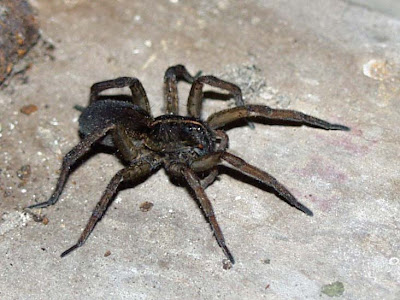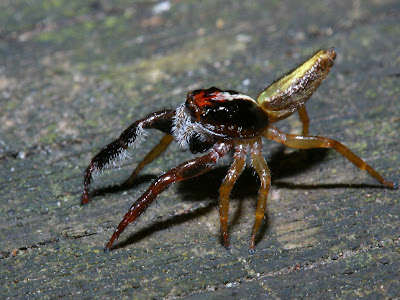 Orangutans are the only exclusively Asian genus of extant great ape. The largest living arboreal animals, they have proportionally longer arms than the other, more terrestrial, great apes. They are among the most intelligent primates and use a variety of sophisticated tools, also making sleeping nests each night from branches and foliage. Their hair is typically reddish-brown, instead of the brown or black hair typical of other great apes.
Orangutans are the only exclusively Asian genus of extant great ape. The largest living arboreal animals, they have proportionally longer arms than the other, more terrestrial, great apes. They are among the most intelligent primates and use a variety of sophisticated tools, also making sleeping nests each night from branches and foliage. Their hair is typically reddish-brown, instead of the brown or black hair typical of other great apes.Native to Indonesia and Malaysia, orangutans are currently found only in rainforests on the islands of Borneo and Sumatra, though fossils have been found in Java, the Thai-Malay Peninsula, Vietnam and Mainland China. There are only two surviving species, both of which are endangered: the Bornean Orangutan (Pongo pygmaeus) and the critically endangered Sumatran Orangutan (Pongo abelii). The subfamily Ponginae also includes the extinct genera Gigantopithecus and Sivapithecus. The word "orangutan" comes from the Malay words "orang" (man) and "(h)utan" (forest); hence, "man of the forest".
The populations on the two islands were classified as subspecies until recently, when they were elevated to full specific level, and the three distinct populations on Borneo were elevated to subspecies. The population currently listed as P. p. wurmbii may be closer to the Sumatran Orangutan than the Bornean Orangutan. If confirmed, abelii would be a subspecies of P. wurmbii (Tiedeman, 1808). Regardless, the type locality of pygmaeus has not been established beyond doubts, and may be from the population currently listed as wurmbii (in which case wurmbii would be a junior synonym of pygmaeus, while one of the names currently considered a junior synonym of pygmaeus would take precedence for the northwest Bornean taxon). To further confuse, the name morio, as well as various junior synonyms that have been suggested, have been considered likely to all be junior synonyms of the population listed as pygmaeus in the above, thus leaving the east Bornean populations unnamed.
Pongo pygmaeus
In addition, a fossil species, P. hooijeri, is known from Vietnam, and multiple fossil subspecies have been described from several parts of southeastern Asia. It is unclear if these belong to P. pygmaeus or P. abeli or, in fact, represent distinct species.





























 Eagles
Eagles













 Spiders
Spiders







